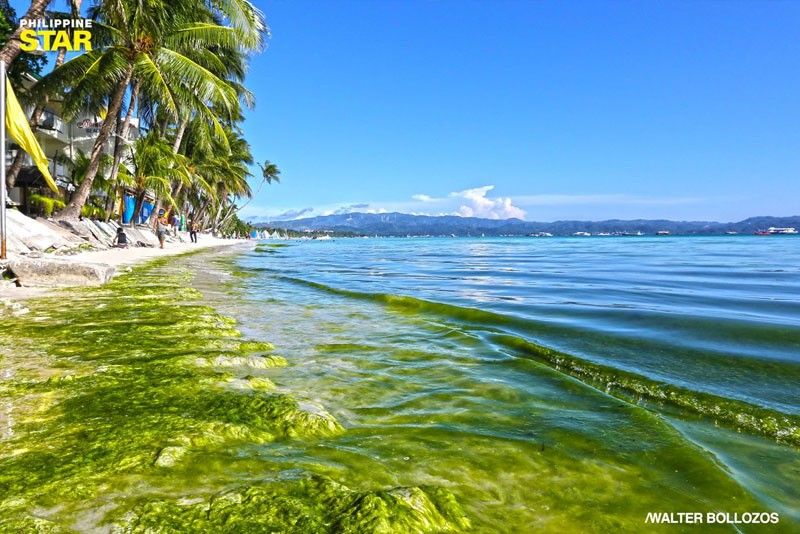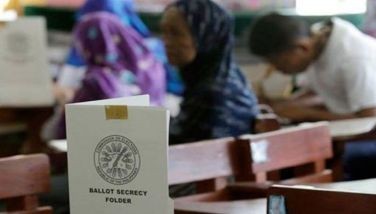Boracay agrarian reform to cover 900 hectares

MANILA, Philippines — Close to 900 hectares of agricultural land on Boracay Island will be covered by the government’s agrarian reform program, an official of the Department of Agrarian Reform (DAR) said yesterday.
David Erro, DAR undersecretary for policy, planning and research, said that a team from the agency that inspected Boracay found that 845 hectares of land on the island could be subjected to the Comprehensive Agrarian Reform Program (CARP).
“Of the figure, 25 hectares are immediately coverable by CARP and can be distributed to around 80 Aeta beneficiaries within three months or less. This will be Phase 1 of the land distribution,” Erro said in a news conference in Quezon City.
The 25.7658-hectare property consists of 14.6643 hectares in Barangay Yapak, 10.0922 hectares in Barangay Manoc-Manoc and 1.0093 hectares in Barangay Balabag.
Erro said Phase 2 would entail distribution of 220 hectares of agricultural lands, and 600 hectares in Phase 3.
“These lands are those occupied by residential structures or commercial establishments. Removal of these structures will have to be facilitated first. It will take a while before this can be distributed,” he said, adding the beneficiaries should be landless, at least 15 years old and willing to cultivate the land.
He said they have drafted an executive order to be signed by President Duterte authorizing the Department of Environment and Natural Resources (DENR) to transfer the management of agricultural lands to the DAR.
“This will take effect 15 days after the President signs the EO,” Erro said.
Duterte earlier promised to distribute Boracay lands to farmers after declaring the 1,032-hectare resort island an agrarian reform area.
Avoid temptation
Aside from cleaning up Boracay, Duterte has ordered Environment Secretary Roy Cimatu to avoid the temptation of looking at beautiful women in skimpy bathing suits.
“The Environment and Natural Resources Secretary Roy Cimatu (is here). He is a general. We know we have many problems… The one about Boracay and open pit mining. It’s destroying the country,” Duterte said in a speech before members of the Filipino community at the Grand Hilton Hotel in Seoul on Sunday.
He said he saw how Cimatu looked with lust at the female guests in Boracay in a photograph that landed on the front page of The STAR a few days after the island was shut down.
“When I looked at the newspaper, I saw the photograph showing Roy Cimatu walking on the beach. A few meters ahead were two white women in bikinis. Cimatu pretended to walk past the foreigners but without taking off his eyes from them,” Duterte said.
Cimatu, who joined other Cabinet members on the stage, merely laughed as the President teased him.
“He has been doing a good job so far,” Duterte said, referring to Cimatu.
He said he wants to ban open-pit mining in Boracay because of the negative impact on the environment.
“I will decide. I do not decide by years. I decide by weeks and months. Maybe, I will close down areas where open-pit mining operates. Everywhere in the country, there is open-pit mining,” he said.
Duterte said residents in poor communities are affected by open-pit mining.
“The rich are not affected. My concern is on the marine life, the source of livelihood of the fisherfolk,” he said, adding, “Either we have to reinvent mining in the Philippines or shut down all these by the end of the year.”
Duterte ordered Cimatu and acting Interior Secretary Eduardo Año to look into the issues hounding Boracay and open-pit mining.
He vowed to retain Boracay as a land reform area, saying he is neither biased against the poor nor favoring the rich.
“I am not cleaning Boracay for the sake of the rich. I’m cleaning it up for the Filipinos. Boracay is still classified as a forest and agricultural area,” he said.
Duterte said he could not allow residential and commercial establishments to operate without proper permits and sewage system.
He said it would spoil efforts to rehabilitate the island, as waste from residential areas would likely end up in the sea.
“You know, Boracay is just a small place. It cannot handle two or three communities, plus the activity at the beach fronts. Because their septic tanks go to the canals that lead to the sea,” he said.
Duterte stressed the need to preserve the environment and address the concerns on public safety and health.
He reiterated that he would prioritize the natives once the rehabilitation of Boracay is completed.
“I will give it to the people for agricultural purposes, otherwise moneyed people would get it and build resorts here and there,” he said.
In April, Duterte issued Proclamation No. 475 closing Boracay and placing it under a state of calamity for six months.
The proclamation came two months after the President described the top tourist destination as a cesspool due to lack of sewerage system.
The closure was expected to cost the economy some P1.9 billion and displace about 35,000 workers. – With Christina Mendez, Alexis Romero
Related video:
- Latest
- Trending


































